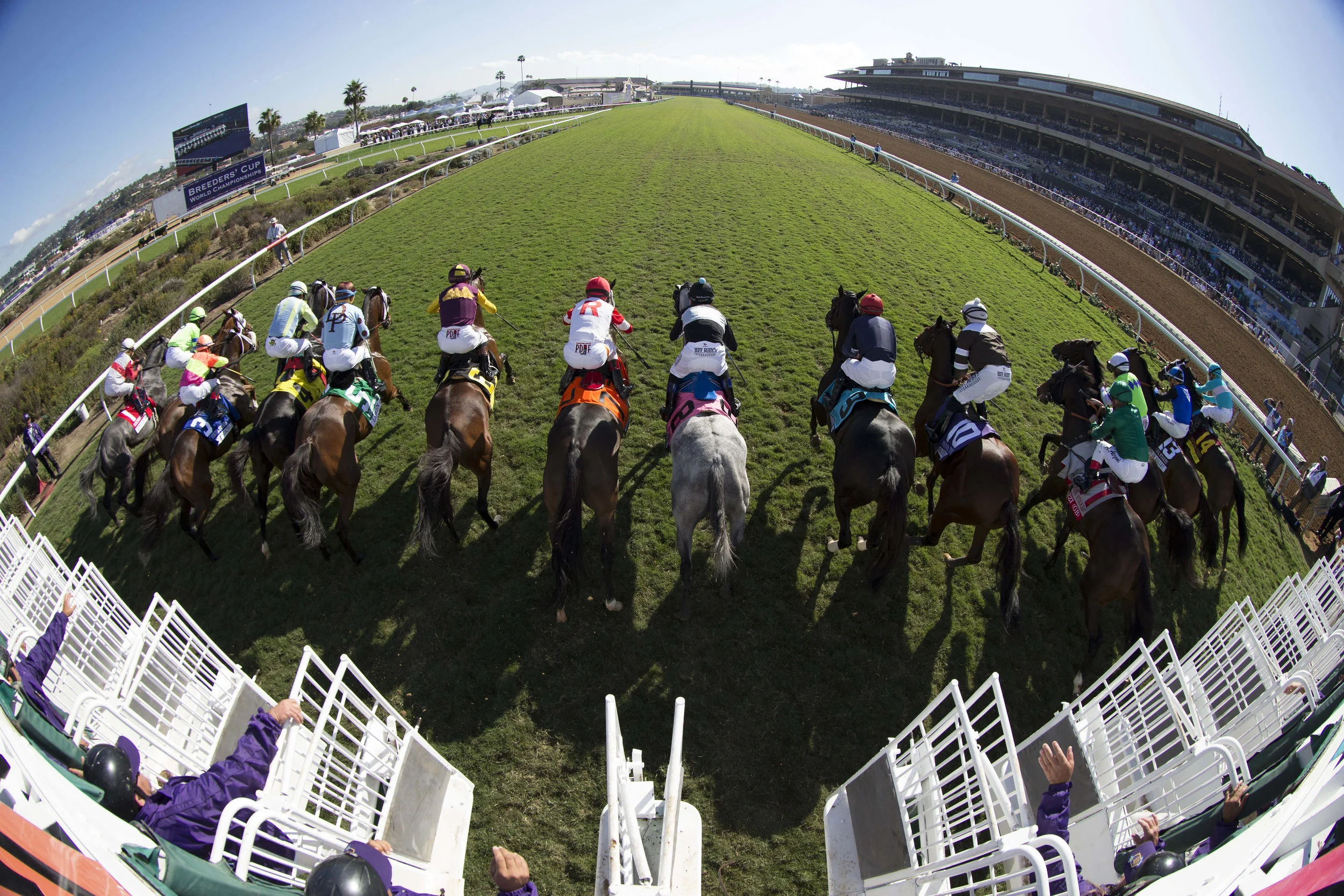Recruiting runners - The lengths that different tracks are going to maximize fields for their races
By Bill Heller
Remember the classic poster of Uncle Sam pointing at you saying, “I Want You” that was used to attract soldiers for World War I and II? Uncle Sam wanted you for the Army.
Picture a race secretary pointing at you exclaiming, “We Want You.” Not soldiers for the Army, of course, but shippers needed to fill their daily race cards.
The need has never been greater, thanks to a foal crop that has plummeted in the last two decades.
Asked if the New York Racing Association has had trouble filling fields, Martin Panza, NYRA’s Senior Vice President of Racing Operations, said in late February, “What racetrack in America doesn’t? The number of horses has greatly dropped.”
He’s not kidding. The Jockey Club reported that the foal crop has dropped from 40,333 in 1990 to 19,925 in 2018.
What makes those numbers even more impactful is that race tracks these days are trying to sustain year-round racing.
In response, several tracks have been offering incentives for shippers. And the leader of the pack is Del Mar’s Ship and Win Program—which is in a partnership with the Thoroughbred Owners of California—has been offering incentives since 2011. “We set the bar very high,” Del Mar Racing Secretary David Jerkens said. “It’s a lucrative program. It’s an attractive enhancement.”
And Jerkens said this year’s programs at both Del Mar meet in the summer and the fall and will be enhanced from last year when field size for the summer increased from 8.5 in 2017 to 8.7 in 2018. The amount of the increase in bonus payments was expected to be announced in April.
“Last year we had 107 horses participate just in the summer and 49 in the fall,” Jerkens said. “Any time you can add more than 100 horses to your inventory, that’s beneficial. Bigger fields create larger handle and larger purses.”
Here’s how it works...
When it began, Del Mar offered a $1,000 check for shippers making their first local start plus a 20% bonus on top of whatever purse money was earned in that first start. Those numbers grew last year to a $2,000 check and a 30% bonus. To qualify, a horse must have made his last start outside California and not raced in the state the previous 12 months. First-time starters are not eligible.
To date, more than 1,000 horses have participated in Ship and Win. According to Del Mar, those horses have made more than 1,500 starts at its track and more than 3,500 starts at other tracks in California.
Surprisingly, most of the benefactors of Del Mar’s program are local horsemen. “Seventy percent of our starters from Ship and Win have been local owners and local horses,” Jerkens said.
Trainer Bob Hess, whom Jerkens said is the “poster boy for the program,” has been on-board with it from day one. “This is a wonderful program,” Hess said. “I have horses at Gulfstream Park, and I try to bring at least 10 horses to Del Mar. It’s been great. It’s been a win-win. It’s obviously good for Del Mar, but it’s also good for Santa Anita because horses come here and stay here.”
Trainer Richard Baltas is another fan of Ship and Win. “The idea is to get them here,” he said. “I claimed a horse at Keeneland last year, then, after the meet was over, I brought him back here and he won twice. People transfer horses out here from back East. Obviously, it could always be better, but we definitely need something. A lot of trainers don’t have money to buy new horses. No horses mean small fields. It’s a problem in California.”
The program helps solve that problem. “The idea is to get horses to ship to California, and, hopefully, they stay in California,” Jerkens said. “So it benefits Santa Anita and Los Alamitos, too.”
To maximize that possibility, Santa Anita began offering its own “Ship and Stay” Program in 2017. Originally, the program offered non-California-bred horses who last started outside California and had not raced in the state the previous year a 20% bonus for the horse’s first start at Santa Anita and a 10% bonus of $1,000—whichever was higher—for a horse’s second and third starts. All that money was split between the horse’s owner and trainer.
The program has been tweaked, and this year bonuses will be given to the trainer only: 10% for a first start and 10% or $1,000—whichever is higher—for the horse’s second and third starts.
In any fashion, Santa Anita’s program strengthens the Del Mar program—a fact not lost on Panza, who was the Director of Racing at Hollywood Park before taking his job with NYRA. “I’d been in California and saw what Del Mar did,” Panza said. “It works at Del Mar. We did it at Hollywood Park. It’s a good idea. It makes sense.”
Accordingly, he had NYRA initiate its own shipping-incentive program in 2018, one it is continuing this year for shippers who come to race at either Aqueduct or Belmont Park. “We did Oaklawn and Gulfstream Park last year,” Panza said. “We did expand it a bit. I don’t think we have to do it. But it makes sense to get horses back in New York. It makes business sense. We just want to help the owners. This helps a bit. Give any owner some help with expenses.”
NYRA’s program this year offered incentive for horsemen based at Fair Hill Training Center, Oaklawn Park, Gulfstream Park and Tampa Bay Downs who raced during the Aqueduct Spring Meet from April 5 through April 20, or during the Belmont Park Spring/Summer meet from April 26 through July 7. Those horses’ owners will be credited with an $800 shipping stipend, excluding stakes races.
A first-time starter must have had their previous three works at Fair Hill to be eligible or display a pattern of workouts at Fair Hill, as determined by NYRA.
Additionally, horses who made their previous start at Oaklawn Park were eligible to NYRA’s Ship and Win Program, which offered a 30% purse bonus for their first two starts as well as a $1,500 shipping stipend for a start during the Aqueduct Spring Meet and the Belmont Park Spring/Summer Meet, excluding stake races.
Shippers who made their previous start at Gulfstream Park or Tampa Bay Downs were eligible for a shipping subsidy for a start during the Aqueduct Spring Meet, excluding stakes races. Owners who shipped horses from either Florida track and made their first New York start from March 8 through the 31st received $2,000. Florida shippers making their first New York start from April 5 through April 20 were credited $1,500.
TO READ MORE —
BUY THIS ISSUE IN PRINT OR DOWNLOAD -
Triple Crown 2019, issue 52 (PRINT)
$6.95
Triple Crown 2019, issue 52 (DOWNLOAD)
$3.99
WHY NOT SUBSCRIBE?
DON'T MISS OUT AND SUBSCRIBE TO RECEIVE THE NEXT FOUR ISSUES!
Print & Online Subscription
From $24.95
#Soundbites - Is there too much racing?
By Bill Heller
Once upon a time, racing in most locations had an off-season. That created anticipation for its return. In the Northeast, when racing only lasted from March through November, you actually missed it in the off months, and you got really pumped up for its return. Those days are long gone.
Racing these days is year-round, and some tracks offer massive cards on Saturdays, as many as 14 races a day instead of eight or nine.
So we asked trainers: Is there too much racing?
*********************************************
Bob Hess Jr.
I don’t think there’s too much racing. But I think nowadays, eight, nine races a day with huge fields is ideal, not 12. I think the average person doesn’t want to be stuck there for more than three hours. In terms of promoting it with young people, eight would be ideal. Again, they don’t want to be stuck there. They get bored.
***************************************
Al Stall
I would say, no, there’s not too much racing. The foal crop is going down, so maybe that will inspire us. There are less opportunities. It could change if we wanted to do it. Cards at Gulfstream Park wear you out with 12 or 13 races. But you don’t have to stay the whole card. Young people now, there’s so much more to do. I would love to be able to educate them about our game.
****************************************
Bill Mott
I think the boutique meets seem to do the best. Longer meets—they never seem to end. People get bored. I think you wear people out with 14 races a day. Eight or nine is enough. I understand what they’re thinking, These guys aren’t stupid. And they look at the numbers. Most places need five days a week. Different people who work around the track need it. You can’t have a full-time employee and race two days a week. It makes no sense. But Instead of running 11, 12 or 14 races, you should run eight or nine. There’s going to be hard-core gamblers who would sit there for 12 hours, but I think they wear other gamblers out. I think they’re wearing people out.
*****************************************
Graham Motion
I think there is too much racing. Look, every race office in the country is looking for horses. I believe that less racing would bring a better product for the bettors. I think less racing, at the end of the day… it’s just common sense to me. People want to see good racing and good fields. Twelve races a day—it’s way too much for everybody, bettors, horsemen and their employees. It’s very stressful for everybody. When your boys are at the track at 4:30 in the morning and still there at 6:30 or 7 or 8 (pm), I think it wears on everybody. Probably the gamblers as well. Jockeys begin at 5:30 in the morning, and they’re there until 7 or 8 (pm). How could a jockey be at his absolute best the entire day? They’ve got to be sharp, thinking quickly and making decisions. How can you keep doing that at 7 o’clock in the evening if you’ve been there all day?
TO READ MORE —
BUY THIS ISSUE IN PRINT OR DOWNLOAD -
Triple Crown 2019, issue 52 (PRINT)
$6.95
Triple Crown 2019, issue 52 (DOWNLOAD)
$3.99
WHY NOT SUBSCRIBE?
DON'T MISS OUT AND SUBSCRIBE TO RECEIVE THE NEXT FOUR ISSUES!
Print & Online Subscription
From $24.95





